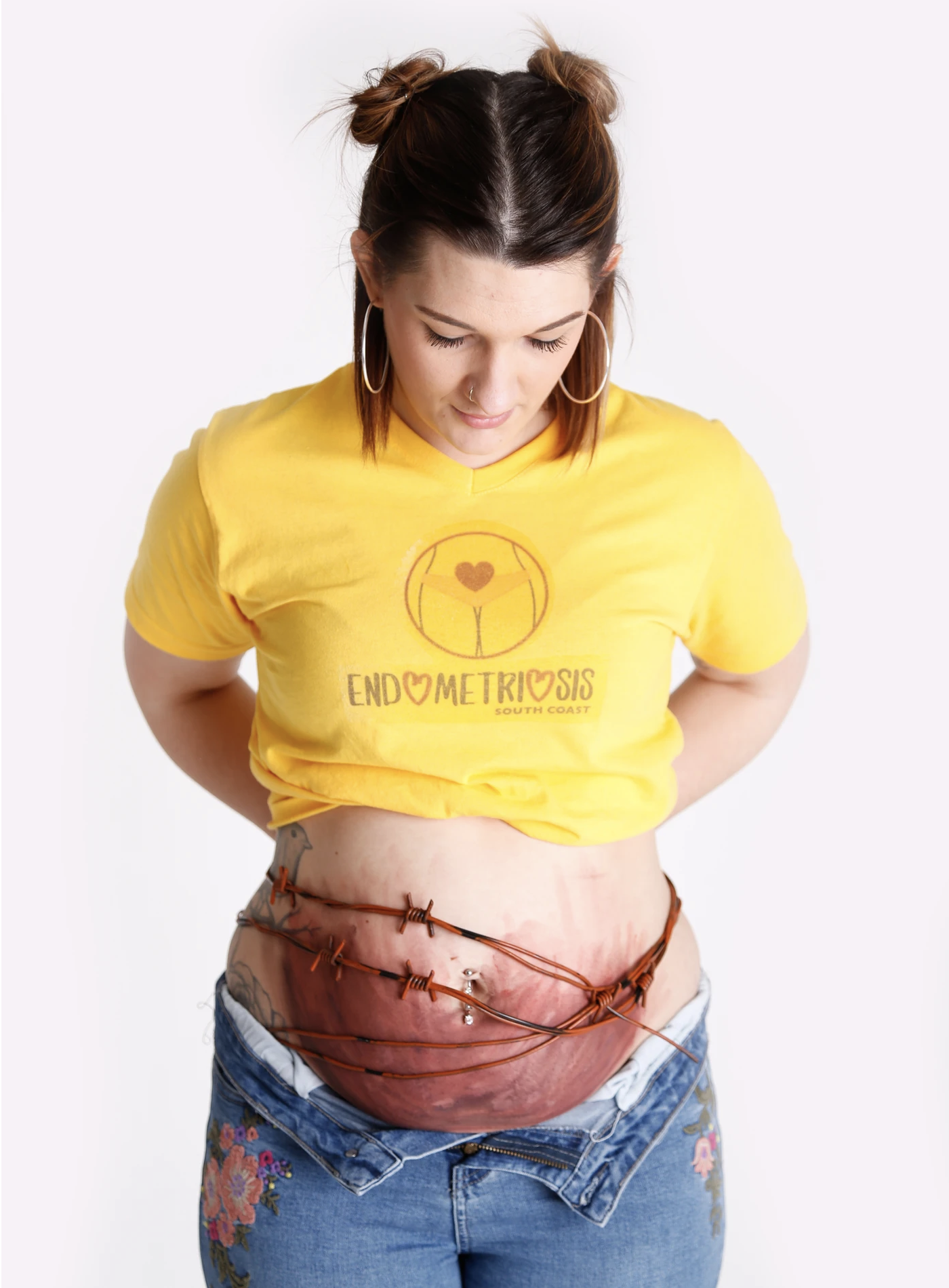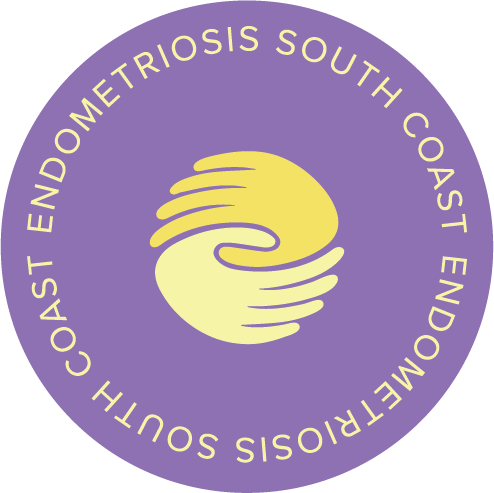Endo and Adeno
Endometriosis is a systemic disease that affects the metabolism in the Liver and Adipose tissue. This leads to systemic inflammation which in turn alters gene expression in the brain and causes pain sensitisation and mood disorders.
The Symptoms of Endo

Almost 200 million worldwide people have endometriosis (Endo). This number is thought to be increasing as awareness increases, this may be because we know more about the condition and more people are being diagnosed correctly. At present, it is often thought of as a disease that primarily affects people of reproductive age but there is increasing literature that points to endometriosis affecting people before menarche and after menopause.
The reason endo develops is still unclear, and treatment is inadequate, often ending in putting a patient in chemical menopause using chemotherapy drugs or hysterectomy. Neither of which cure the condition and individuals often require ongoing care. Surgical and medical therapies that are available to people with Endo can be effective, however, there is a recurrence of symptoms at a rate of 20-50%, but this varies greatly between studies.
Medical gaslighting is a real problem in the Endo community.
On top of the confusing “typing”, there is the complication that the pain felt by a patient is not necessarily comparable to the severity or type of endo that has been diagnosed, making Endo a complicated and complex condition to treat.
Pain felt by patients may have an association with psychosocial factors. The inability to successfully identify how Endo develops and its associated pain is the obstruction that prevents the design and provision of effective treatment.
Without effective treatment and intervention Endo will affect all aspects of a patient’s life, with growing evidence showing that it can be present both before menarche, as well as after menopause. Studies found endometrial tissue outside of the uterus in post-mortem foetuses.
Endo is a hormone-dependent disease, where stem cells are dysfunctional due to progesterone resistance. This disrupts the bi-directional communication between stem-cell signalling pathways that are affected by local inflammation which forms an inflammation-hormonal loop that is dysregulated. This shows that endometriosis is also an inflammatory disease and needs to be treated as such.

The current standard of care is to treat Endo with combined oral contraceptives, progestins, or short-term treatment with gonadotropin-releasing hormone (GnRH) analogues. This approach is not taking the inflammatory side of Endo into account and patients with the disease are not being treated efficiently or effectively. Many studies have found that there is no strong data that suggests hormone therapy to treat Endo-related pain works sufficiently, and many patients who are on hormone therapy report higher intensity and frequency of pain when compared to patients that are not.
The risk of Endo has been linked to Ethnicity with many studies reporting that Asian women are at a 9x higher risk of being diagnosed than those of white European ethnicity.
Endo has a variety of co-morbidities and up to 20% of women with Endo also suffer with irritable bowel syndrome (IBS), interstitial cystitis (IC) and migraines.
- It has been suggested that to receive appropriate care there is a need for accredited centres of excellence whose main goal is to reduce diagnosis time (currently on average 7.5 years), cost of Endo on the UK economy (currently £8.2bn a year), and time from being diagnosed with Endo to being referred to individualised specialist care. However, as of 2018, there are only 63 British Society for Gynaecological Endoscopy (BSGE) accredited Endometriosis Centres in the UK.
- The socioeconomic burden of the disease in the UK is estimated to be in excess of £8.2 billion per year.
- More than 75% of participants in one study have reported being absent from work due to endometriosis, on average 5.3 days out of the month, as well as 40% of women becoming unemployed due to the disease.
- 46% of patients with endometriosis need to have appointments with upward of five doctors to gain a correct diagnosis. Despite the prevalence rates of endometriosis being so high, there is very little research and funding to undertake large high-quality studies into the care and lived experiences of patients with endometriosis.
- In 2016, the National Health and Medical Research Council allocated £669,025 to endometriosis research, with diabetes being allocated £51.2 million, despite endometriosis having very similar prevalence rates to diabetes.
- 82% of participants were unable to carry out day-to-day activities due to symptoms associated with endo.
- 95% of people with Endo said that symptoms impacted their well-being negatively.
- 90% said they would like access to psychological services.
- There are very few studies involving comparisons between different subgroups of the Endo community including different ethnicities, social statuses, and genders.
*Reports published by the World Health Organization, the British Mental Health Foundation and the British Department of Health and Social Care.
There is a severe lack of high-quality studies, or published evidence regarding Endo and the pain associated with the disease. There is also the problem of measuring pain as severity, generality and importance of pain is subjective and varies from patient to patient.
What is Adenomyosis?


What is Adenomyosis?
Adenomyosis (ah-den-o-my-o-sis) is a uterine condition where the inner lining of the uterus (endometrium) grows into the muscular wall of the uterus (myometrium). This causes the uterine walls to thicken, leading to inflammation, heavy periods, and pain.
Unlike endometriosis, which occurs outside the uterus, adenomyosis affects the uterus itself.
Types of Adenomyosis
• Focal: As the name indicates, focal adenomyosis is adenomyosis in one particular site of the uterus.
• Adenomyoma: adenomyoma is a form of focal adenomyosis, but it is more extensive.
• Diffuse: Unlike the other two classifications, diffuse adenomyosis spreads throughout the uterus.
Adenomyosis often leads to uterine enlargement, systemic inflammation, and often has a significant impact on a person’s quality of life.
What Causes Adenomyosis?
The exact cause of adenomyosis is unknown, but several theories suggest potential factors:
• Hormonal fluctuations (estrogen and progesterone levels)
• Previous uterine surgeries such as C-sections or fibroid removal
• Inflammatory responses
• Genetic predisposition
• Uterine inflammation that occurs after childbirth — this may break the usual boundaries of the cells that line the uterus.
• Extra tissues in the uterine wall, which are present before birth and grow during adulthood
More research is needed to better understand the causes of this condition.
Who is affected?
Adenomyosis can affect anyone with a womb, typically between their 30s and 50s, but it can occur earlier or later. It is often diagnosed in those who have had children, but it can also affect those who have not.
How can I get a diagnosis?
In the UK, adenomyosis diagnosis often involves a process of elimination and may take some time. Diagnosis can include:
GP consultation:
• Discuss your symptoms, medical history, and family history.
• Keeping a symptom diary can provide helpful insights.
Imaging tests:
• Ultrasound: Transvaginal ultrasounds are a common first step, though adenomyosis is not always visible.
• MRI: An MRI can offer more detailed imaging to identify uterine abnormalities and confirm adenomyosis.
Histological diagnosis:
• In some cases, adenomyosis is diagnosed after a hysterectomy, where uterine tissue can be examined under a microscope.
Treatment
While there is no cure for adenomyosis, treatments can help manage symptoms and improve quality of life.
1. Pain management:
• Non-steroidal anti-inflammatory drugs (NSAIDs)
• Heat therapy
• Physiotherapy
• Pain-modifying medications
2. Hormonal treatments:
Hormonal therapies aim to regulate or suppress menstrual cycles to manage symptoms. Common options include:
• Combined oral contraceptive pill
• Progestogens
• Mirena coil (hormonal IUD)
• GnRH analogues
3. Surgical treatments:
• Conservative surgery: Removal of focal adenomyosis (adenomyomectomy).
• Definitive surgery: A hysterectomy may be recommended for those who do not respond to other treatments and no longer plan to conceive.
Living with Adenomyosis
Adenomyosis symptoms such as heavy bleeding and pain can significantly affect daily life, work, and relationships. Seeking medical help, exploring support networks, and discussing concerns openly can help manage these challenges.

